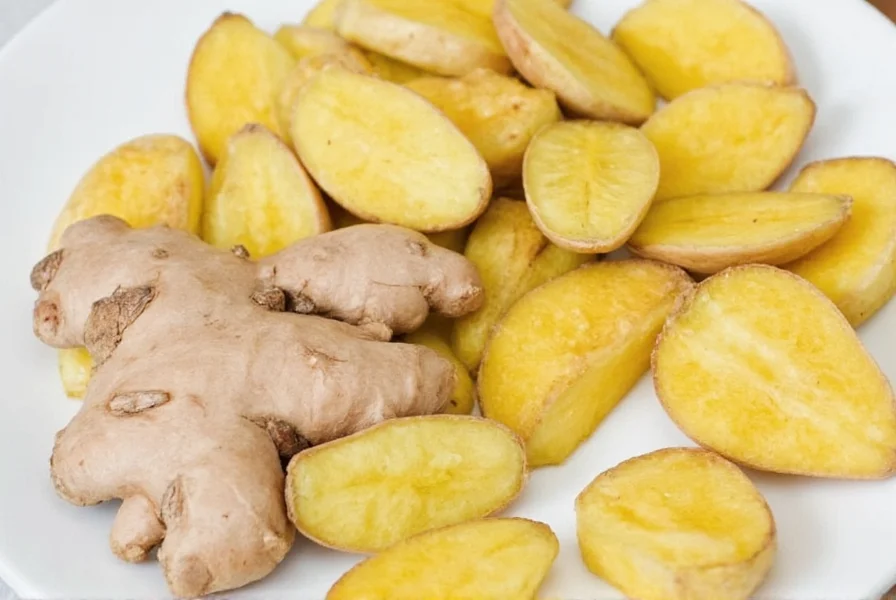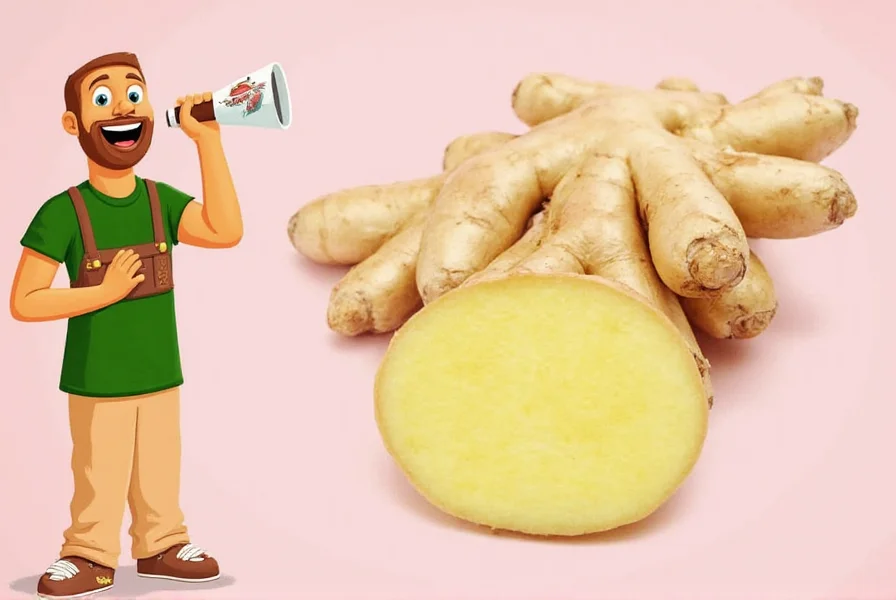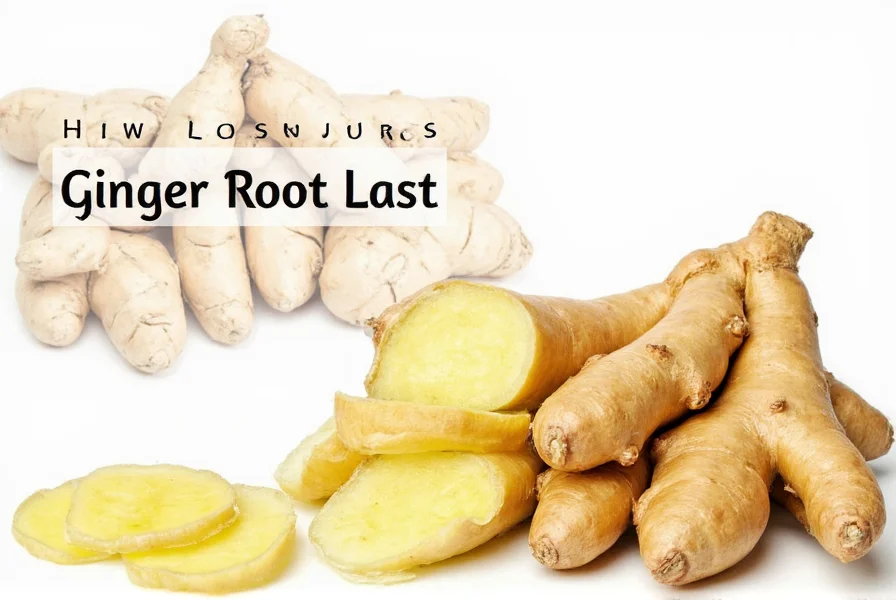Understanding how long ginger root lasts is essential for reducing food waste and ensuring you always have this versatile ingredient ready for cooking. Whether you're a home cook stocking your pantry or someone who grows their own ginger, proper storage knowledge helps maximize freshness and flavor while minimizing spoilage.
Factors That Determine Ginger Root Shelf Life
Ginger's longevity depends on several key factors that affect its moisture content and exposure to elements that accelerate decay. Whole, unpeeled ginger lasts significantly longer than cut pieces because the skin acts as a natural barrier against moisture loss and microbial growth.
Environmental conditions play a crucial role in ginger preservation. Temperature fluctuations, humidity levels, and air exposure all impact how quickly ginger deteriorates. Understanding these variables helps you choose the most effective storage method for your specific circumstances.

Storage Methods Compared: Shelf Life Breakdown
The storage technique you choose dramatically affects how long your ginger root remains fresh and usable. Here's a detailed comparison of common storage methods and their effectiveness:
| Storage Method | Shelf Life | Best Practices |
|---|---|---|
| Room Temperature (whole) | 1-2 weeks | Store in cool, dark place with good air circulation; avoid plastic bags |
| Refrigerator (whole) | 3-4 weeks | Wrap in paper towel, place in airtight container; change paper weekly |
| Refrigerator (cut) | 1-2 weeks | Store in airtight container with minimal air; place paper towel inside |
| Freezer (whole) | 5-6 months | Wrap tightly in plastic wrap then foil; store in freezer bag |
| Freezer (grated) | 6 months | Freeze in ice cube trays with water; transfer to freezer bags |
| Pickled | 1-2 months | Store in vinegar solution in refrigerator; use sterilized jars |
How to Identify Spoiled Ginger Root
Recognizing when ginger has gone bad prevents potential foodborne illness and ensures you're using quality ingredients. Fresh ginger should feel firm and have a spicy, citrusy aroma. As it deteriorates, several warning signs appear:
- Texture changes: Soft, mushy spots or overall sponginess indicate moisture loss and decay
- Color shifts: Grayish discoloration beneath the skin or dark spots signal spoilage
- Mold growth: Any visible mold, especially white or green fuzzy patches, means immediate disposal
- Smell alteration: Loss of characteristic spicy fragrance or development of sour, musty odors
- Wetness: Excessive moisture or liquid surrounding the ginger in storage containers
When in doubt about ginger's freshness, remember that small wrinkled areas can often be cut away while the rest remains usable. However, if more than 25% shows signs of spoilage, discard the entire piece to avoid potential health risks.
Proven Techniques to Extend Ginger Freshness
Maximizing ginger's shelf life requires proper preparation before storage. For refrigerator storage, wrap whole ginger in a paper towel to absorb excess moisture, then place it in an airtight container. This method prevents the condensation that accelerates mold growth while maintaining optimal humidity levels.
Freezing provides the longest preservation for ginger root. You can freeze whole pieces by wrapping them tightly in plastic wrap followed by aluminum foil, then placing them in freezer bags with the air removed. For cooking convenience, grate fresh ginger and freeze the grated portions in ice cube trays filled with water, then transfer the cubes to freezer bags. This method allows you to use precise amounts without thawing an entire piece.

Special Considerations for Cut Ginger
Cut ginger requires different handling than whole root. Once ginger is sliced or grated, its shelf life decreases significantly due to increased surface area exposed to air. For cut ginger, always store it in an airtight container with a paper towel to absorb moisture, and change the paper towel every few days.
When storing cut ginger in the refrigerator, place it in the vegetable crisper drawer where humidity levels are more stable. For extended storage of cut ginger, consider submerging it in sherry or mirin, which preserves flavor while adding culinary versatility. This method keeps cut ginger fresh for up to three weeks while imparting additional flavor.
Practical Storage Solutions for Different Needs
Your ideal ginger storage method depends on your usage patterns. If you use ginger frequently in small amounts, keeping a piece in the refrigerator with weekly paper towel changes provides convenient access while maintaining freshness. For occasional users, freezing grated ginger in portion-sized cubes offers maximum shelf life with minimal waste.
Gardeners with homegrown ginger can extend shelf life by allowing harvested roots to cure for several days in a shaded, well-ventilated area before storage. This curing process hardens the skin and reduces moisture content, significantly improving storage longevity compared to freshly harvested ginger.
Frequently Asked Questions
Can you still use ginger when it turns gray inside?
Gray discoloration inside ginger typically indicates oxidation rather than spoilage. If the texture remains firm and there are no signs of mold or unpleasant odors, gray ginger is generally safe to use. Simply cut away any discolored portions and use the remaining firm sections. However, if the gray areas feel soft or mushy, discard those portions as they may be beginning to spoil.
Does freezing ginger affect its flavor or texture?
Freezing preserves ginger's flavor compounds effectively, though the texture becomes softer when thawed due to ice crystal formation breaking down cell structures. This texture change doesn't matter for cooking applications where ginger will be minced, grated, or cooked, as the structural integrity isn't important. For recipes requiring fresh ginger slices, frozen ginger works well when used directly from the freezer without thawing, as it's easier to slice when partially frozen.
How can I store ginger without a refrigerator?
Without refrigeration, store whole ginger root in a cool, dark place with good air circulation, such as a pantry or cellar. Place it in a breathable container like a paper bag or bamboo steamer basket, avoiding plastic which traps moisture. In ideal conditions (60-70°F with moderate humidity), whole ginger can last 1-2 weeks. For longer storage without refrigeration, consider preserving methods like candying, pickling, or drying the ginger, which can extend shelf life to several months.
What's the best way to store ginger for tea preparation?
For tea preparation, freezing ginger in thin slices or grated portions offers maximum convenience. Freeze whole peeled ginger, then slice it into thin rounds using a frozen food knife. Store the slices in labeled freezer bags by portion size. When making tea, simply drop a frozen slice directly into hot water—the cold temperature helps release more flavor compounds. This method preserves ginger's volatile oils better than room temperature storage and provides consistent tea strength.
Can I plant store-bought ginger that's starting to sprout?
Yes, store-bought ginger that has begun sprouting can often be planted to grow new ginger. Choose pieces with multiple healthy sprouts and allow them to cure for 24-48 hours to form a protective callus. Plant in well-draining soil with the sprouts facing up, keeping the soil consistently moist but not waterlogged. While commercial ginger may have been treated with growth inhibitors, many pieces will still sprout successfully given proper conditions. This method typically yields harvestable ginger in 8-10 months.











 浙公网安备
33010002000092号
浙公网安备
33010002000092号 浙B2-20120091-4
浙B2-20120091-4